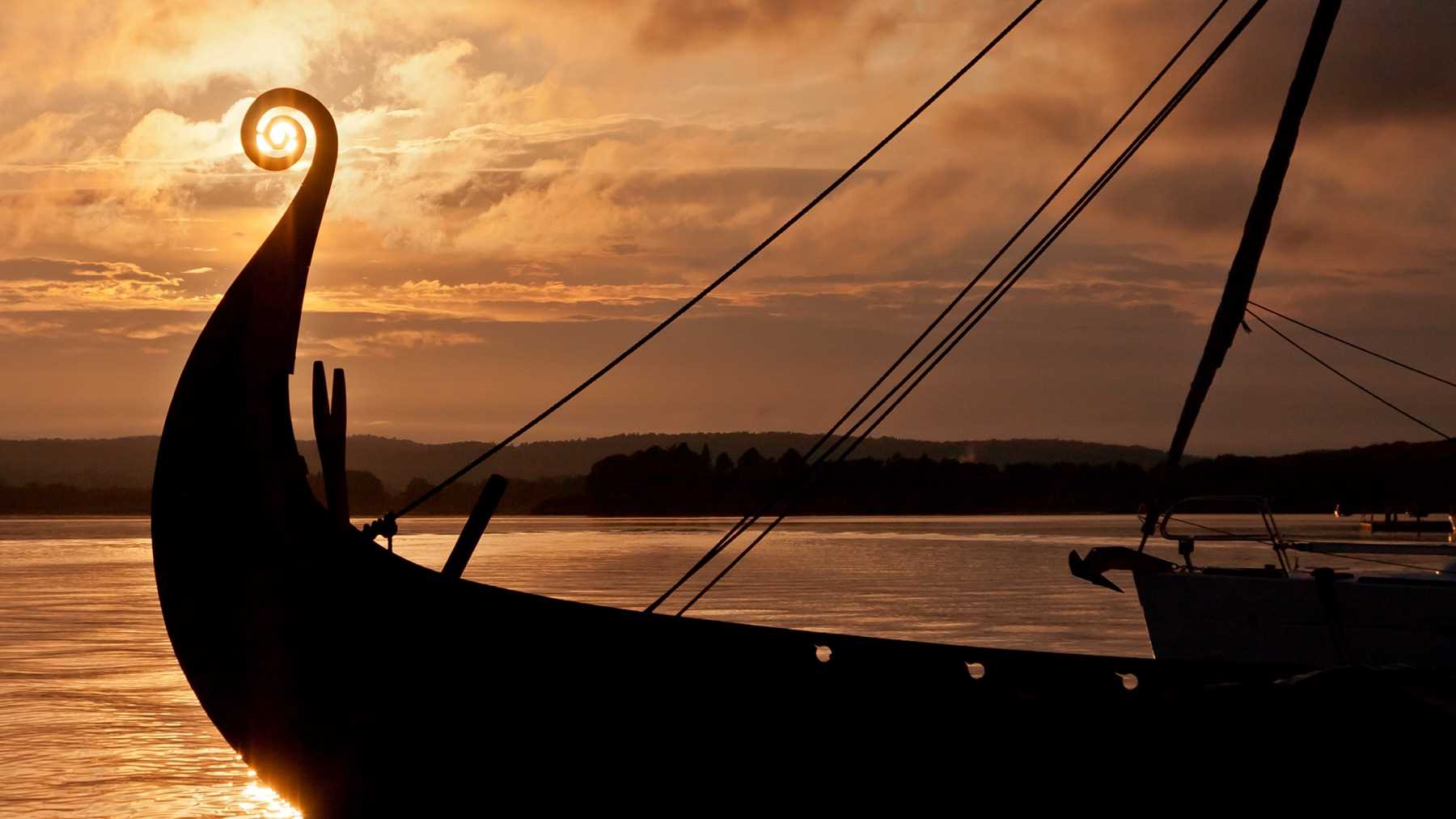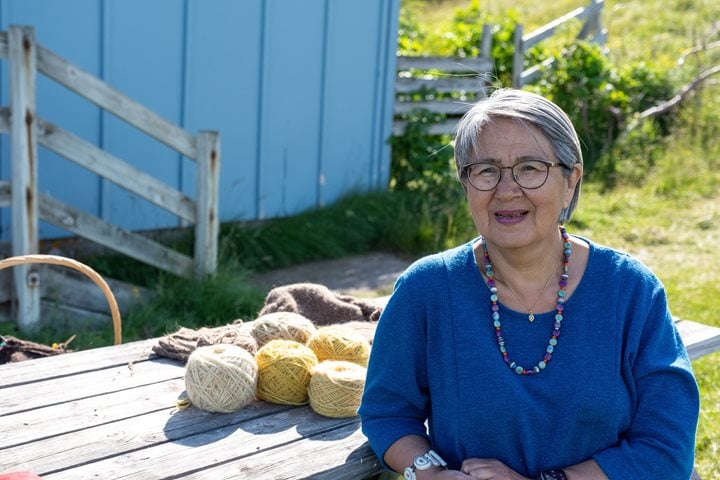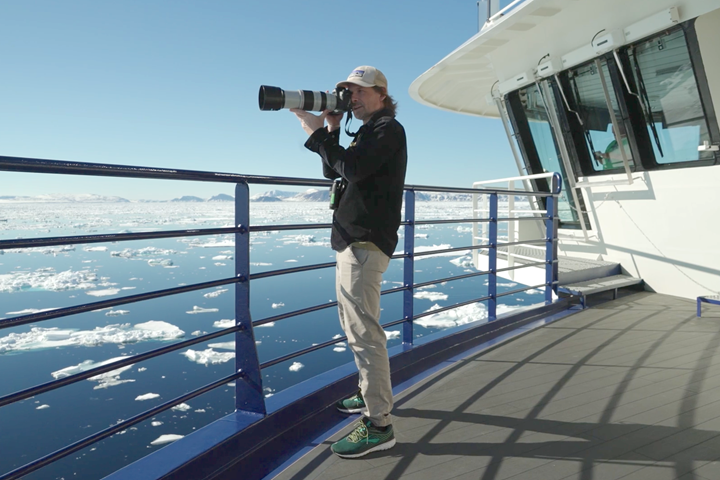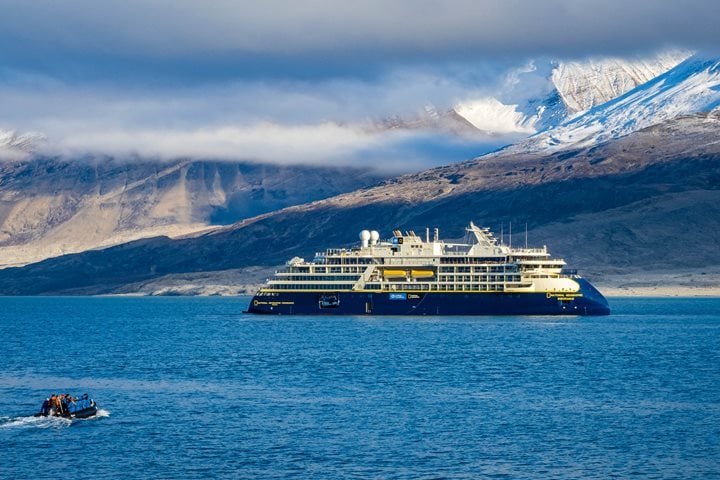In harbors across the North Atlantic, Lindblad-National Geographic guests will often spy small, traditional boats that have been lovingly restored. Look out for them rising and falling at sheltered moorings where you can observe their many design elements patterned after the history-changing Scandinavian ships of the 9th-11th centuries.
Get Inspired By Photos, Videos, Webinars, Stories, And Exclusive Offers.
Sign Up
Up until that time period, ships rarely ventured across open water. Instead, they hugged the coastlines, seeking refuge from storms by heading for land. The crews aboard these ships generally encountered no greater challenges than the Baltic Sea, the North Sea, and the Irish Sea. But the ships the Vikings built were capable of going farther and taking on stormy weather.
A New Kind of Hull
Constructed with overlapping strakes (planks), Viking ships were light, flexible, and resilient. This so-called clinker construction allowed for many different sizes to be built and their strength lay in this new type of hull design. By cutting timber along the grain instead of across it, the planks themselves became pliable, which allowed these vessels to ride the waves of the rough Atlantic weather. Internal ribs, knees, and thwarts provided additional strength and ships could be sailed or rowed.
A Legacy of Design
Over the centuries, archaeologists have found fragments of these ships or whole wrecks, some deliberately sunk to blockade the entrances to harbors and others used as tombs. People from chieftains to fishermen were buried in ships that became monuments in the landscape. The vessels were hauled up onto land, supplied with food and tribute as well as tools and equipment to serve the dead in the afterlife. In some cases, spectacularly complete vessels have been excavated, giving archaeologists valuable glimpses into the lives of Viking people. Over the past two centuries, a picture has built up of every type of Viking ship from small coastal vessels, known as faerings to deep-hulled cargo ships called knarr, and the great warships that terrorized Europe. The shallow draft of the latter meant that these warships could be as easily beached as moored, and they were able to penetrate deep inland along river systems.
The heyday of these vessels came to a gradual end during the medieval period when a new form of ship, the cog, generally replaced them. Design elements from the Viking ships, however, lived on in small coastal vessels. For example, depictions of ships of this type, known as West Highland galleys, appear on 16th-century gravestones in Scotland. This same essential design went out with men from the Orkney Islands to northern Canada with the Hudson Bay Company in the 17th and 18th centuries where it metamorphosed into the famous York boats used in the fur trade.
Verne Equinox, CC BY 3.0, via Wikimedia Commons
The Role of Replicas
Vikings ships have been reconstructed as teaching tools, for research purposes, and, in the case of the first replica based on a real ship, to prove a point. In 1880, a ship named Viking was excavated from the burial mound of a king in Gokstad, Vestfold, Norway. Discovered in remarkable condition and lovingly conserved, it is the high point of any expedition stop at the Museum of the Viking Age in Oslo.* Measuring more than 75 feet in length, made of oak, and requiring a crew of 30 men, Viking’s elegant lines are truly breathtaking.
The replica ship was constructed to underline the point that Columbus might not have been the first European to reach America. It made the hazardous crossing from Bergen, Norway to the Chicago World’s Fair to prove it could be done. It took four wave-tossed weeks to reach Newfoundland before going on to New York then through the Erie Canal to arrive in Chicago, to a great fanfare, on July 12, 1893.
At that time, the only ”evidence” that the Vikings had reached North America were the Icelandic sagas, semi-historical stories preserved through oral tradition and later written down. These described what some considered to be no more than good yarns describing unlikely voyages. In 1960, however, undisputable evidence of their veracity was recovered at L’Anse aux Meadows, Newfoundland, Canada and it is now accepted that the saga accounts of Helluland, Markland, and Vinland (names given to the coasts of Labrador, Newfoundland, and Maine) had real places and events at their core. An astonishing piece of recent research has enabled the very precise date of 993 to be given to this brief period of Scandinavian settlement.
L’Anse aux Meadows is a popular stop for many of our expedition ships. At the adjacent recreated Viking Age village of Norstead there is a replica of a knarr, the sort of ship which might have transported these intrepid explorers. Named the Snorri, after the first European child born in North America, it carried 12 men aiming to replicate Leif Ericcson's journey from Greenland to Canada and the account of their 1997 voyage highlights the many hazards that the settlers had to overcome. A damaged rudder delayed them by a year, but they eventually completed the voyage despite bad weather and a leaking hull.
Nowadays, replicas are built as part of scientific research. The construction and sailing of Sea Stallion of Glendalough has provided valuable new insights into this vibrant period of maritime history. Sea Stallion is a replica of Skuldelev 2, a very large longship recovered from the shallow waters around Roskilde, Denmark but originally built in Ireland of Irish oak. At just short of 100 feet in length, this is the largest replica yet attempted. Under sail, it achieved speeds of 17 knots and, when rowed by 60 men, managed an impressive 4.2 knots.
Viking ships have always fired the imagination and we can only marvel at their beauty and at their sailors’ feats of endurance. Ships were vital to almost every aspect of the Vikings’ world, and we find them depicted in ancient rock art, on gravestones, and scratched on wood, metal, and bone fragments. They still have that special magic to inspire. Who, after all, can forget Kirk Douglas leaping from oar to oar in the classic 1958 film The Vikings? For me, however, it is the humble workaday offspring of these splendid vessels quietly moored in harbors and backwaters that link us to the past. Keep an eye open for them, for it was their predecessors which, a thousand years ago, opened up the Atlantic sea roads.
Read the first blog in the series here and stay tuned for more inspiring North Atlantic stories from Aisla.
Ailsa Mainman is English by birth but grew up in Canada before returning to England to study archaeology. With a doctorate in Anglo-Saxon studies, she worked for York Archaeological Trust researching material from the ground-breaking Viking age discoveries that later became the world famous Jorvik Viking Centre. She has been joining Lindblad-National Geographic expeditions, intermittently, for over 20 years, lecturing on many aspects of the North Atlantic littoral.
*Note: The Viking Ship Museum is closed for rebuilding and will reopen as the Museum of the Viking Age in 2025/2026.





